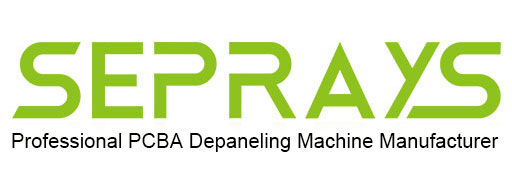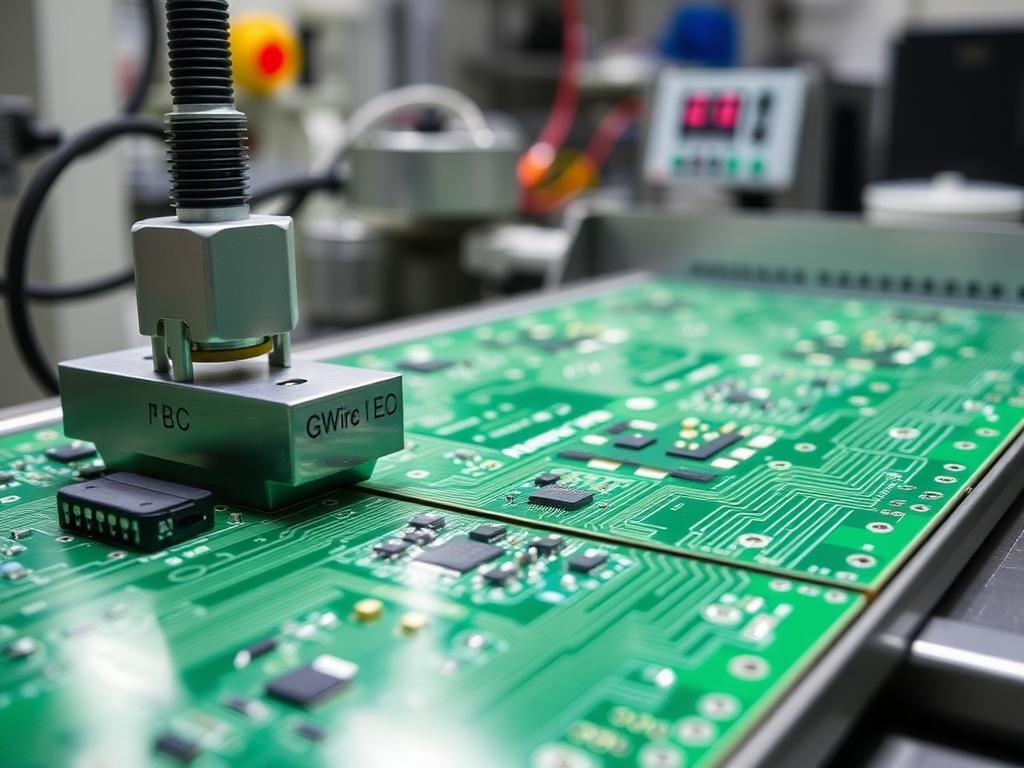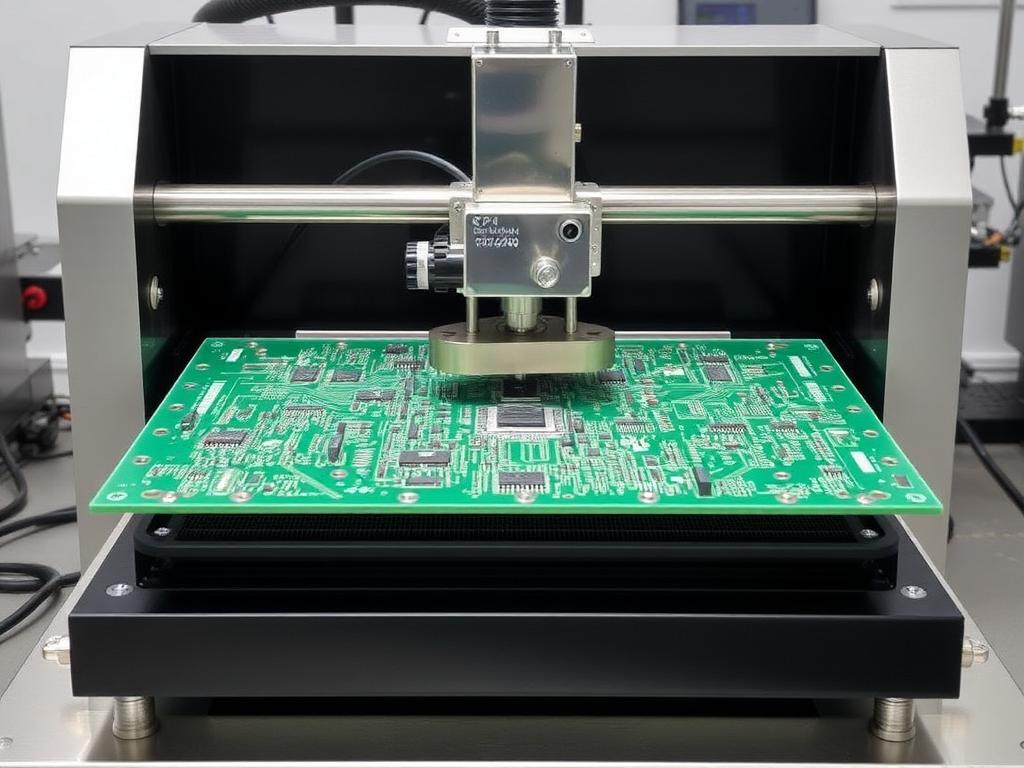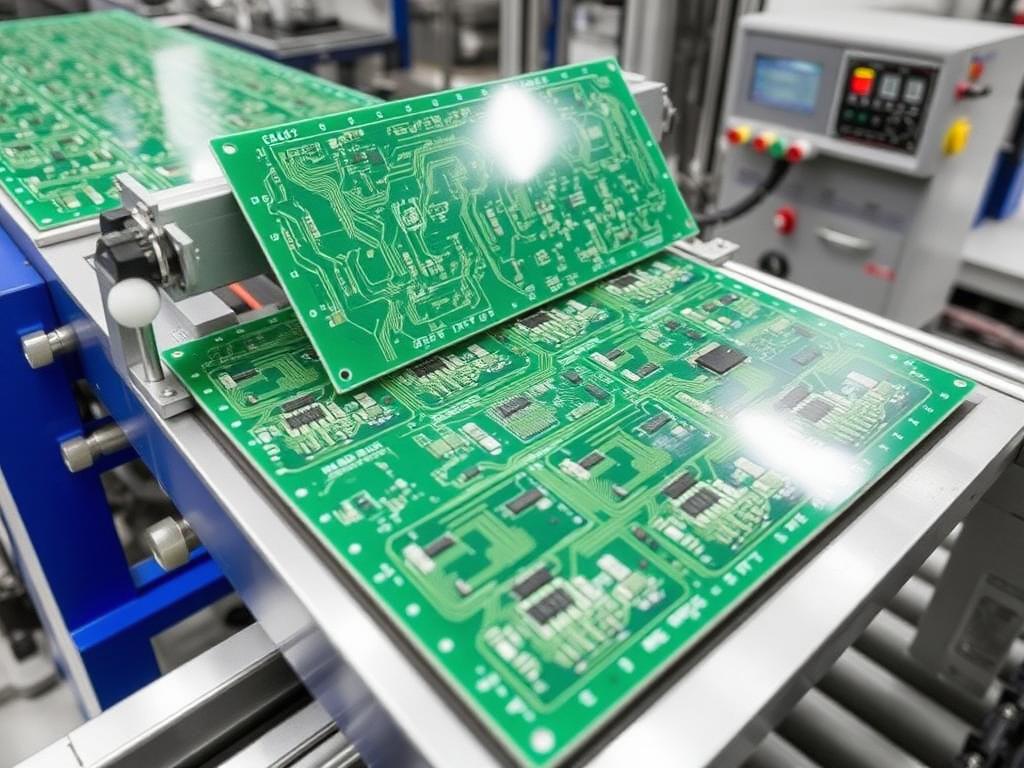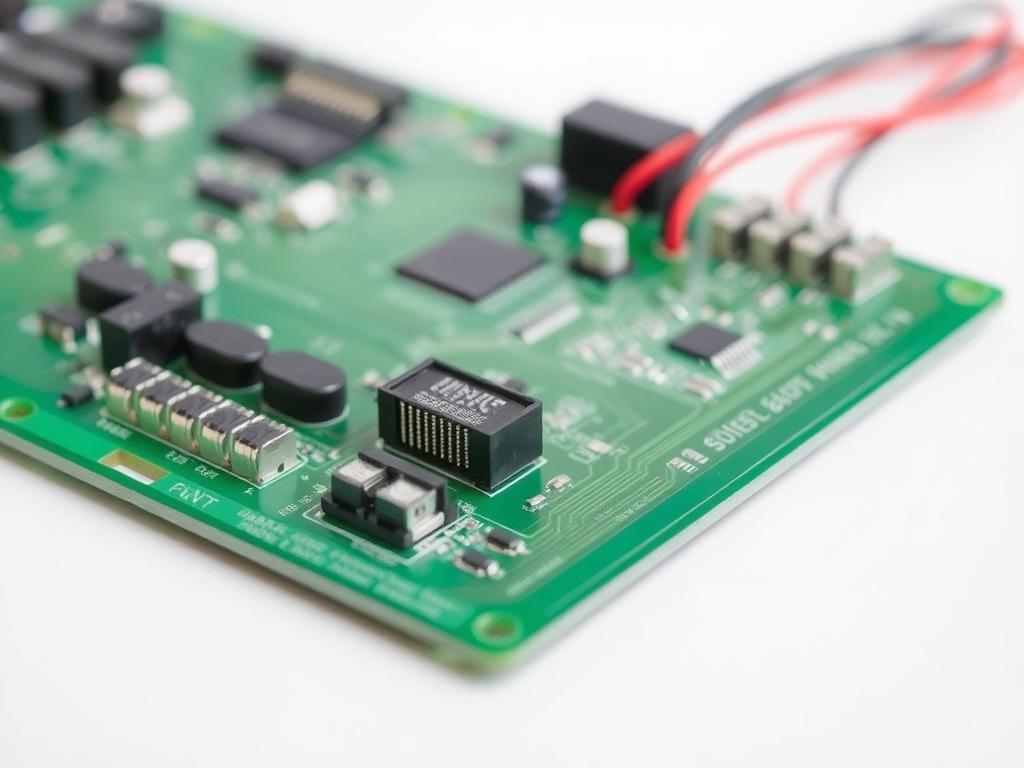![]()

PCB depaneling for consumer electronics
Precision PCB Depaneling: A Comprehensive Guide to Cutting-Edge Methods
As someone who’s spent the last 20 years in the thick of the PCB industry, I’ve seen firsthand how critical the depaneling process is. Separating individual printed circuit boards (PCBs) from a larger panel might seem like a simple step, but it’s actually a crucial stage that demands precision and the right tools. This article will explore the various methods of PCB depaneling, from manual techniques to state-of-the-art laser cutting, and help you choose the best approach for your specific needs. You’ll learn why the right choice here can affect everything from component integrity to overall production efficiency. So, whether you’re a large electronics manufacturer or a lone PCB enthusiast, understanding the nuances of depaneling is essential for success.
Detailed Explanation
1. What exactly is PCB Depaneling and why is it so important?
PCB depaneling, also called singulation, is the process of separating individual printed circuit boards from a larger panel after the assembly and soldering processes. It’s a critical step in manufacturing peranti elektronik, as the pcbs are often produced in a panel yang lebih besar to improve the efficiency of pengeluaran dan perhimpunan. Why is it so important? Well, the chosen method has a direct impact on the quality, kebolehpercayaan, dan yield of the final product. A poorly executed depaneling process can induce unwanted tekanan mekanikal, potentially damaging sensitive komponen atau yang litar bercetak traces, leading to functional issues and higher production costs. If you fail at this step, the product will fail – it’s that simple. For more insight into the world of PCB manufacturing, this guide provides more information, PCB Manufacturing: A Comprehensive Guide.
The ultimate goal of the proses depaneling is to separate individual pcbs cleanly and accurately without causing damage. This requires choosing the right depaneling tool and method that matches the characteristics of the papan litar, jenis komponen mounted, and the overall pembuatan requirement. This isn’t just about separating panels, it’s about maintaining quality, reducing waste, and ensuring the proper functionality of the final electronic device.
2. What are the traditional methods of PCB depaneling?
tradisional kaedah pcb depaneling often involve manual separation techniques or the use of simple tools. These manual methods may involve using a hand pemotong or breaking the pcbs along pre-scored lines. While these methods are generally cost-effective for small-scale operations, they have significant drawbacks. Manual depaneling boleh memperkenalkan tekanan mekanikal, leading to bending or twisting of the papan, potentially damaging sensitive komponen, especially in flexible circuits. Additionally, they are not suitable for boards with pelekap permukaan komponen near the edges. Also, the quality and ketepatan can vary significantly due to the inconsistencies of human handling. As someone who’s spent considerable time in the PCB shop, I can attest that consistent and reliable separation using manual methods is almost impossible.
Another common traditional approach is the use of a die. This involves pressing a specialized die against the panel to berasingan yang pcbs. While this method can achieve faster perpisahan than fully manual methods, it still introduces significant tekanan mekanikal. Additionally, the initial cost of creating a specific die for each different pcb design can be high. The limitations of these traditional approaches highlight the need for more advanced and precise solutions for modern elektronik production. These methods, while seemingly simple, often lack the ketepatan and consistency required for today’s high-density and sensitive komponen.
3. What is laser depaneling, and what are its benefits?
Laser depaneling, a cutting-edge method, utilizes high-ketepatan laser beams to cleanly and accurately berasingan pcbs daripada panel. One of the major benefits of laser depaneling is the minimal tekanan mekanikal it imparts on the papan litar. Unlike manual methods or die memotong, laser depaneling doesn’t physically contact the papan, reducing the risk of damage to delicate komponen, especially on fleksibel papan. This leads to better kebolehpercayaan dan lebih tinggi yield.
Furthermore, laser memotong provides exceptional flexibility and ketepatan. It can handle complex shapes and very precise cutting paths that are impossible with traditional tools. The laser beam’s fine memotong capability allows perpisahan daripada pcbs with minimal clearance, enabling higher panel utilization and simpanan. Laser sistem are also highly adaptable and can be easily reconfigured for different pcb designs, making it a very cost-effective penyelesaian in the long run. In my experience, switching to laser depaneling has consistently resulted in more efficient and higher-quality results for many of our clients.
4. How does router depaneling compare to other methods?
Penghala depaneling, also known as penghalaan pcb, employs a high-speed milling pemotong kepada berasingan pcbs daripada panel. ini method is particularly suitable for handling thicker pcbs and for cutting complex contours. The main advantage of router depaneling is its versatility in cutting different materials and ketebalan levels. It’s a good option when the requirement is for clean edges, and it can handle more complex papan shapes than a simple V-cut.
However, router depaneling also has some drawbacks. It does generate dust and debris, which might require additional cleaning steps selepas proses depaneling. Also, while modern penghala sistem are designed to minimize tekanan mekanikal, it is still higher compared to laser depaneling. The milling pemotong applies some force to the papan, potentially inducing stress, especially on papan litar fleksibel atau pcbs with delicate pelekap permukaan komponen. While router depaneling is a step up from manual methods, laser cutting has become the go-to choice when high ketepatan dan minima tekanan are paramount. To learn more, see PCB Separation Techniques:Routing vs. Laser Cutting
5. What is V-Groove Depaneling and when should it be used?
V-Groove depaneling is a method that employs a V-shaped blade to score the panel along the lines where the pcbs individu need to be separated. Once the skor v is made, the individual panels can be broken apart manually or by mechanical means. This method is often used when the pcbs are relatively simple in shape and when the perpisahan line is a straight line. V-Groove is a cost effective method for a high volume production, especially when dealing with tegar fr4 papan.
While cost-effective, V-Groove depaneling has limitations. It’s not suitable for pcbs with components located very close to the breaking line due to the risk of damage. Also, the perpisahan is not always as clean as with laser cutting or penghala kaedah, and it can introduce some level of tekanan mekanikal kepada papan. Therefore, V-Groove is suitable for situations where cost efficiency and high-volume is critical, and where the pcbs layout and komponen allow for this type of perpisahan. In my experience, if the design allows and the komponen are placed carefully, it’s an efficient option to berasingan panels. Our Pemisah Guillotine PCB ZM30-P is an example of V-groove depaneling solution that can be used in conjunction with manual panel breaking.
6. Why might you consider a PCB/FPC Punching Machine for depaneling?
A Mesin penebuk PCB/FPC menggunakan a die to stamp out individual circuits daripada a panel. This method is especially suitable for papan litar bercetak fleksibel (FPCs) and other materials where precise and fast perpisahan is required. It can quickly punch out pcbs individu with consistent accuracy, especially when you have large production runs with standardized shapes and sizes.
However, the upfront cost of creating a custom die can be significant, and it’s not economical for small production runs or for diverse pcb designs. In many cases, you will require a unique die for every design, which can limit fleksibiliti. However, once in place, it’s very cekap and very quick to berasingan pcbs daripada panel. I often recommend this when the manufacturing process involves many of the same types of pcbs and high daya pengeluaran is a critical requirement. If you need more information, our Mesin Pemotong Penebuk ZM10T & 15T PCB & FPC is a great example of this technology in action.
7. What is the impact of mechanical stress during the depaneling process?
Tekanan mekanikal is a significant concern during the proses depaneling. It refers to the physical forces applied to the papan semasa perpisahan, whether by bending, twisting, cutting, or punching. This stress can induce unwanted changes in the pcb and its delicate komponen. It can cause micro-cracks in the substrat, damage pelekap permukaan komponen, or sever thin tembaga traces. All these problems can lead to decreased kebolehpercayaan, reduced yield and overall product failure.
Meminimumkan tekanan mekanikal is critical for ensuring the functionality and reliability of peranti elektronik. This is why methods such as laser depaneling are becoming more popular, as they practically eliminate mechanical contact and thus reduce the risk of inducing stress. Choosing a kaedah depaneling with minimal stress is not just about preserving the physical integrity of the papan but also about ensuring the long-term performance of the final product. In my experience, paying extra attention to this factor can drastically reduce defects and improve overall quality.
8. What applications benefit most from laser PCB depaneling?
Laser depaneling offers many advantages that make it particularly suitable for specific applications. Firstly, it’s the go-to choice for papan litar fleksibel dan papan litar bercetak fleksibel (FPCs). These papan are very sensitive kepada tekanan mekanikal, which traditional methods can’t handle without risk. Secondly, laser depaneling is ideal for high-density pcbs that have very small and complex designs. High ketepatan of laser allows to cut close to sensitive komponen without causing damage. It is also ideal for a wide variety of pcb materials including FR4, ceramic, and composites.
Additionally, industries like aerospace, medical devices, and high-performance electronics, where kebolehpercayaan and minimal damage are paramount, heavily rely on laser memotong. The ability to precisely berasingan pcbs with minimal stress and high ketepatan ensures that the performance of the final product is not compromised. This is why it is used by most well known brands that have high quality requirement, like the ones listed earlier such as TP-LINK, Canon, BYD, Flex, TCL, Xiaomi, Lenovo, OPPO, HONOR and Foxconn. Laser depaneling truly shines where precision, minimal impact and high kebolehpercayaan are needed.
9. How can we help you optimize your depaneling process?
With 20 years of experience in the PCB industry, we at PCB Depaneling understand the complexities of the proses depaneling and we’re ready to offer customized solutions for all your needs. Whether you’re dealing with rigid or papan litar fleksibel, or high volume production or individual prototypes we have the right tools and expertise to guide you. We offer a comprehensive range of equipment, including laser depaneling sistem, penghala machines, and various other methods, including V-Groove Depaneling dan Mesin Penebuk PCB/FPC to meet your specific needs.
Our experts are here to work with you to assess your specific requirements, from papan design to required daya pengeluaran and quality. We are committed to providing solutions that not only improve your pengeluaran efficiency but also enhance the kebolehpercayaan of your products. We can assist you in choosing the best method, whether it’s automating your line using our Peralatan Automatik or creating a more integrated Peralatan talian keseluruhan SMT penyelesaian. In addition to that we provide aksesori that you might need in the depaneling proses pembuatan. Don’t hesitate to hubungi kami so we can explore how we can help you to achieve excellence in PCB manufacturing.
10. What are some common questions about PCB depaneling?
- What is the difference between laser depaneling and router depaneling? Laser depaneling utilizes a laser beam to cut, offering high ketepatan dan minima tekanan mekanikal, ideal for sensitive pcbs dan papan litar fleksibel. Router depaneling uses a milling pemotong, suitable for thicker pcbs and more complex shapes, but may induce more tekanan.
- Is manual depaneling a suitable method for all types of boards? Manual depaneling is often cost-effective for small-scale operations but is not suitable for sensitive components or boards that require high precision. It can introduce mechanical stress and is not suitable for pelekap permukaan komponen atau papan litar fleksibel and it is not optimal for large volumes of pcbs.
- How can I choose the right depaneling method for my production line? Selecting the right method depends on various factors including the type of pcbs, their size, required ketepatan, volume and komponen placement. Laser depaneling is excellent for intricate designs, while router depaneling is suited for thicker boards, and V-Groove is good for larger volume when suitable.
- What is the long-term benefit of using laser depaneling? Laser depaneling leads to reduced mechanical stress, enhanced precision, and higher yield. While the initial investment might be more significant, you’ll see cost savings in the long run due to less damage and higher kebolehpercayaan. Also, the flexibility of laser sistem will allow you to change the perpisahan keperluan easily.
- Can laser depaneling handle flexible and rigid boards equally well? Laser depaneling can handle both rigid and flexible boards, but it is especially advantageous for flexible boards because it introduces very little mechanical stress, which is critical for these sensitive materials.
Pengambilan Utama
- PCB depaneling is a vital process that significantly impacts the quality and kebolehpercayaan daripada peranti elektronik.
- Macam-macam kaedah depaneling exist, ranging from manual to advanced laser cutting, each with its own benefits and drawbacks.
- Laser depaneling is the most accurate and least tekanan inducing option, suitable for sensitive komponen dan papan litar fleksibel.
- Penghala depaneling is a good option for thicker boards and more complex shapes, while V-Groove is suitable for high-volume straight line separation.
- Memilih yang betul kaedah depaneling depends on the specific requirements of your pcbs and overall pengeluaran keperluan.
- Meminimumkan tekanan mekanikal semasa proses depaneling is crucial for preserving the functionality and kebolehpercayaan of the final product.
- We are here to assist you in optimizing your process and provide the best penyelesaian untuk keperluan khusus anda.
- Contact us to discover how our expertise and comprehensive equipment range can enhance your PCB production process.
By understanding these key aspects of PCB depaneling, you can make informed decisions that lead to higher quality products and more efficient manufacturing processes.
